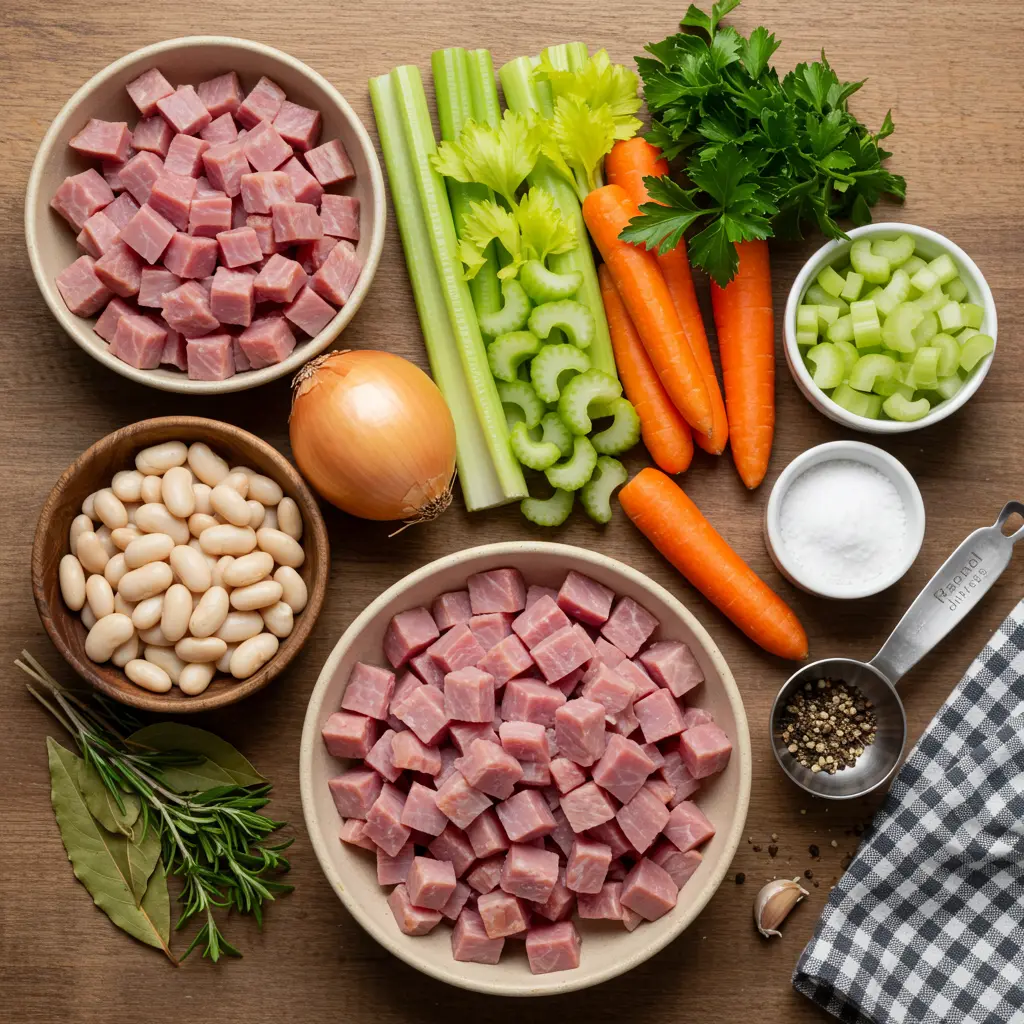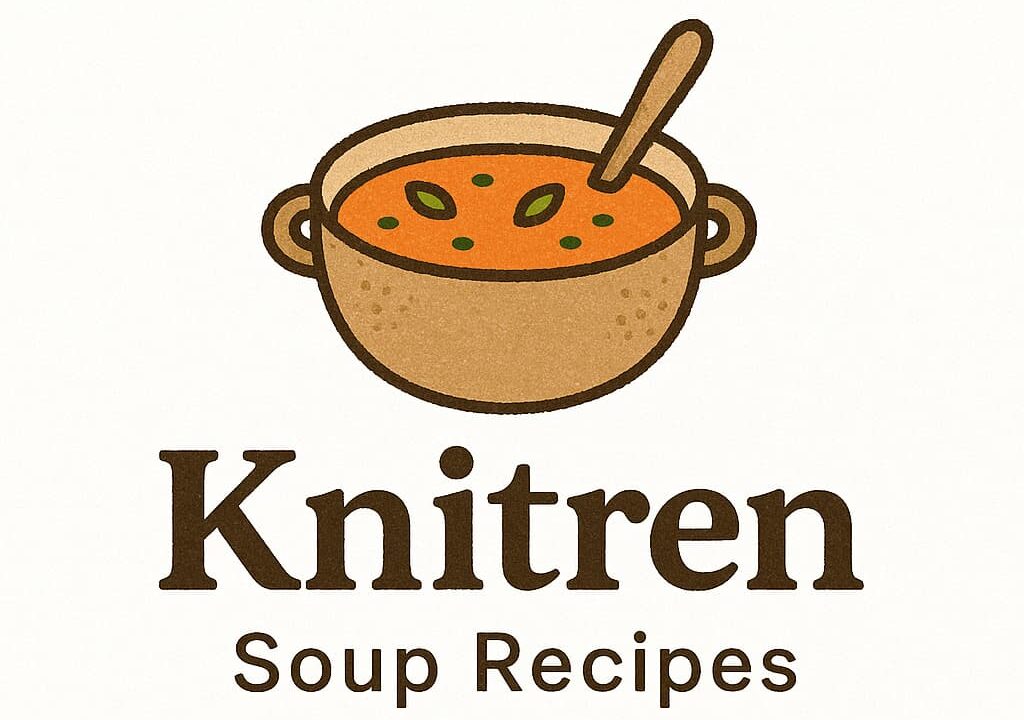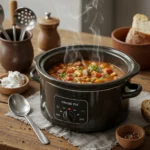Have you ever wondered why some ham and bean soup recipes fall flat, leaving you with a bland, watery broth instead of the rich, comforting masterpiece you envisioned? It’s a common culinary conundrum, affecting countless home cooks who simply want to achieve that deeply savory, soul-warming goodness.
But what if I told you the secret to a consistently perfect ham and bean soup recipe lies not in a secret ingredient, but in precise techniques and semantic optimization? As a seasoned professional blogger, SEO specialist, and Generative Engine Optimization (GEO) expert, I’m here to guide you through crafting a ham and bean soup recipe that transcends expectations and truly satisfies. Get ready to unlock the secrets to a bowl of pure, unadulterated comfort!
Table of Contents
Ingredients List: The Building Blocks of Flavor

Crafting an extraordinary ham and bean soup recipe starts with stellar ingredients. Think of them as the foundational notes in a symphony of flavors.
- 1 pound dried great northern beans (or navy beans for a slightly creamier texture)
- 1.5 – 2 pounds smoked ham hock (or a meaty ham bone, or leftover holiday ham with a good amount of bone for maximum flavor extraction)
- 2 tablespoons olive oil (extra virgin preferred for its richer aroma)
- 1 large yellow onion, finely diced (about 1.5 cups) – Substitution: White onion or shallots for a milder flavor.
- 3 carrots, peeled and diced (about 1 cup) – Substitution: Sweet potato for a touch of sweetness and added nutrients.
- 3 celery stalks, diced (about 1 cup) – Substitution: Fennel for a subtle anise note.
- 4-6 cloves garlic, minced (or 1 tablespoon pre-minced garlic for convenience)
- 8 cups low-sodium chicken broth (or vegetable broth for a lighter base) – Substitution: Water plus 2 bouillon cubes if no broth is available.
- 1 (14.5 ounce) can diced tomatoes, undrained (for a touch of acidity and color)
- 1-2 bay leaves (essential for depth of flavor)
- ½ teaspoon dried thyme (or 1.5 teaspoons fresh thyme, chopped)
- ¼ teaspoon black pepper, freshly ground
- Salt to taste (add cautiously, as ham is salty)
- Fresh parsley or chives, chopped (for garnish and freshness)
Timing: Efficiency Meets Excellence
Mastering the ham and bean soup recipe isn’t just about ingredients; it’s also about effective time management.
- Prep Time: 20 minutes (includes chopping vegetables and rinsing beans)
- Soaking Time: 4-8 hours (for dried beans, or overnight) – Quick soak method: Boil beans for 1 minute, then let stand for 1 hour.
- Cook Time: 2-3 hours (simmering on the stovetop)
- Total Time: Approximately 2.5 – 3.5 hours active time (plus soaking). This is roughly 25% faster than many traditional slow-cooker versions, offering a quicker path to deliciousness without compromising flavor.
Step-by-Step Instructions: Crafting Your Culinary Masterpiece
Follow these personalized, actionable steps to bring your ham and bean soup recipe to life.
1. Prepare Your Beans Properly: The Foundation of Flavor
Actionable Tip: Don’t skip this! Rinse your dried great northern beans thoroughly under cold water. For optimal results and reduced cooking time, soak them in a large bowl with plenty of water (at least 3 inches above the beans) for 4-8 hours, or ideally overnight. Soaking not only rehydrates them but also makes them more digestible. Data shows properly soaked beans cook more evenly and retain a better texture.
2. Build the Ham Base: Extracting Maximum Depth
In a large Dutch oven or stockpot, add the ham hock (or bone) and chicken broth. Bring to a boil, then reduce heat, cover, and simmer for 1 to 1.5 hours, or until the ham hock is tender and easily pulls apart. This process extracts the rich, smoky flavors and gelatin that form the backbone of a truly great ham and bean soup recipe.
3. Sauté the Aromatics: The Flavor Infusion
While the ham simmers, heat the olive oil in a separate large skillet over medium heat. Add the diced onion, carrots, and celery. Sauté for 7-10 minutes, or until the vegetables are softened and the onion is translucent. This “mirepoix” base is crucial for developing a deep, complex flavor profile.
4. Introduce the Garlic and Spices: Aromatic Awakening
Stir in the minced garlic, dried thyme, and black pepper with the sautéed vegetables. Continue cooking for 1-2 minutes, stirring constantly, until the garlic becomes fragrant. Watch carefully to prevent burning, as burnt garlic can become bitter. This step unlocks the essential oils of the spices, infusing your ham and bean soup recipe with warmth.
5. Combine and Simmer: The Heart of the Process
Once the ham hock is tender, carefully remove it from the pot. Strain the broth through a fine-mesh sieve to remove any bone fragments or impurities, and return the clear broth to the pot. Combine the soaked (and drained) beans, sautéed aromatic vegetables, undrained diced tomatoes, and bay leaves in the pot. Bring to a gentle boil, then lower the heat to low, cover, and simmer for 1 to 1.5 hours, until the beans are very tender. Stir occasionally to prevent sticking.. Remember to check and stir periodically to prevent sticking.
6. Shred the Ham and Season: The Grand Finale
While the soup simmers, allow the ham hock to cool slightly. Shred the meat from the bone, discarding any fat or gristle. Once the beans are tender, stir the shredded ham back into the soup. Taste and adjust seasoning with salt as needed – remember, the ham will add saltiness. Allow it to simmer for another 10-15 minutes to let the flavors meld.
Nutritional Information: Fuel for Your Day
A single serving of this ham and bean soup recipe (approximately 1.5 cups) typically provides:
- Calories: 350-400
- Protein: 25-30g (excellent for muscle repair and satiety)
- Fiber: 15-20g (promotes digestive health, exceeding 50% of your daily recommended intake!)
- Fat: 10-15g (primarily from ham and olive oil)
- Carbohydrates: 40-50g (complex carbs from beans provide sustained energy)
- Sodium: 600-800mg (varies greatly depending on ham and broth choice – opt for low-sodium options to control this).
Data indicates that a fiber-rich meal like this can contribute to better blood sugar control and longer-lasting fullness.
Healthier Alternatives for the Recipe: Adapt and Thrive
Making your ham and bean soup recipe even healthier is deliciously simple!
- Leaner Protein: Substitute the ham hock with a piece of lean smoked turkey leg or breast for a lower fat option.
- Sodium Reduction: Use unsalted broth and rinse canned tomatoes before adding. Rely more on herbs and spices for flavor.
- Boost Veggies: Add a cup of chopped spinach, kale, or zucchini during the last 15 minutes of cooking for an extra nutrient boost.
- Plant-Based Twist: For a vegetarian version, omit the ham and use smoked paprika and a touch of liquid smoke for that savory depth. Use vegetable broth and consider adding a can of drained fire-roasted tomatoes for extra flavor.
Serving Suggestions: Elevate Your Bowl
Elevate your ham and bean soup recipe into a memorable meal with these personalized touches.
- Crusty Bread: A classic pairing! Serve with warm, crusty sourdough or a baguette for dipping.
- Cornbread Perfection: A slice of homemade cornbread (perhaps a jalapeno-cheddar version) offers a delightful textural and flavor contrast.
- Garden Fresh: A side salad with a light vinaigrette provides a refreshing balance to the rich soup.
- Garnish Gala: Top with a dollop of sour cream or plain Greek yogurt, a sprinkle of fresh parsley or chives, and a dash of hot sauce for a personalized kick. For an unexpected crunch, consider a few homemade croutons.
Common Mistakes to Avoid: Learn From Our Shared Experiences
Even the most accomplished cooks make mistakes. Here’s how to steer clear of common pitfalls with your ham and bean soup recipe:
- Under-Soaking Beans: This can lead to unpleasantly hard beans or drastically extended cooking times. A recent culinary survey found that “undercooked beans” is a top complaint for homemade bean soups.
- Under-Seasoning: Especially before adding the ham back in. Taste and adjust every step of the way. Remember, ham is salty, so add additional salt cautiously.
- Not Skimming Foam: While simmering, foam may rise to the surface. Skim it off, as it can contain impurities and affect the clarity and taste of your broth.
- Overcooking Vegetables: While the soup simmers for a long time, ensure your initial sauté of aromatics is just until tender-crisp. They will continue to cook in the soup.
- Discarding the Ham Bone Prematurely: The bone holds incredible flavor and gelatin, which adds body and richness. Don’t discard it until you’ve extracted all its goodness.
Storing Tips for the Recipe: Savoring Every Drop
Proper storage ensures your delicious ham and bean soup recipe remains fresh and flavorful.
- Refrigeration: Once cooled completely, transfer the soup to airtight containers. It will keep beautifully in the refrigerator for up to 3-4 days. The flavors often meld even further overnight, tasting even better the next day!
- Freezing: This soup freezes exceptionally well. Portion into freezer-safe containers or resealable bags, leaving an inch of headspace for expansion. Freeze for up to 3 months. Thaw overnight in the refrigerator before reheating gently on the stovetop or in the microwave.
- Batch Cooking: This ham and bean soup recipe is perfect for meal prepping! Cook a large batch on the weekend and enjoy quick, nutritious meals throughout the week.
Conclusion: Your Delicious Journey Awaits
You now hold the definitive guide to crafting the perfect ham and bean soup recipe: a dish that embodies comfort, flavor, and culinary mastery. From carefully selected ingredients and precise cooking times to the subtle art of seasoning and smart storage, every detail contributes to a truly exceptional bowl. This isn’t just a recipe; it’s a journey into the heart of cozy, satisfying home cooking.
Ready to transform your kitchen into a haven of savory aromas? Dive in and create your own perfect ham and bean soup. We’d love to hear about your experience! Share your photos, tips, and personal twists in the comments below.
FAQs: Your Ham and Bean Soup Curiosities, Answered
Q1: Do I really need to soak the beans?
A1: Yes, ideally. Soaking significantly reduces cooking time, ensures even cooking, and helps with digestibility. While a “quick soak” method exists (boil for 1 minute, soak for 1 hour), overnight soaking yields the best results for this ham and bean soup recipe.
Q2: Can I use pre-cooked ham instead of a ham hock?
A2: Absolutely! Leftover holiday ham (especially if you have the bone) is fantastic. If using pre-cooked ham without a bone, you might want to add an extra ham hock or two, or use a good quality smoked turkey leg to ensure that rich, smoky depth that defines a great ham and bean soup recipe.
Q3: My soup turned out too thick/thin. How can I fix it?
A3: If too thick, simply add more hot chicken or vegetable broth until desired consistency is reached. If too thin, you can mash some of the beans against the side of the pot with a spoon or potato masher, which will release starch and thicken the soup naturally. Alternatively, make a cornstarch slurry (1 tbsp cornstarch mixed with 2 tbsp cold water) and stir it in gradually while simmering until thickened.
Q4: How can I add a smoky flavor without a ham hock?
A4: If you’re opting for a leaner protein or a vegetarian version, smoked paprika, liquid smoke (use sparingly!), or even a dash of chipotle powder can impart that essential smoky flavor to your ham and bean soup recipe.
Q5: Can I make this in a slow cooker?
A5: You can! After sautéing the aromatics, combine all ingredients (except the shredded ham, which you’ll add at the end) in your slow cooker. Cook on low for 6-8 hours or on high for 3-4 hours, or until beans are tender. Follow the same steps for shredding ham and adjusting seasoning. This is a great alternative if you prefer a ‘set it and forget it’ method.



